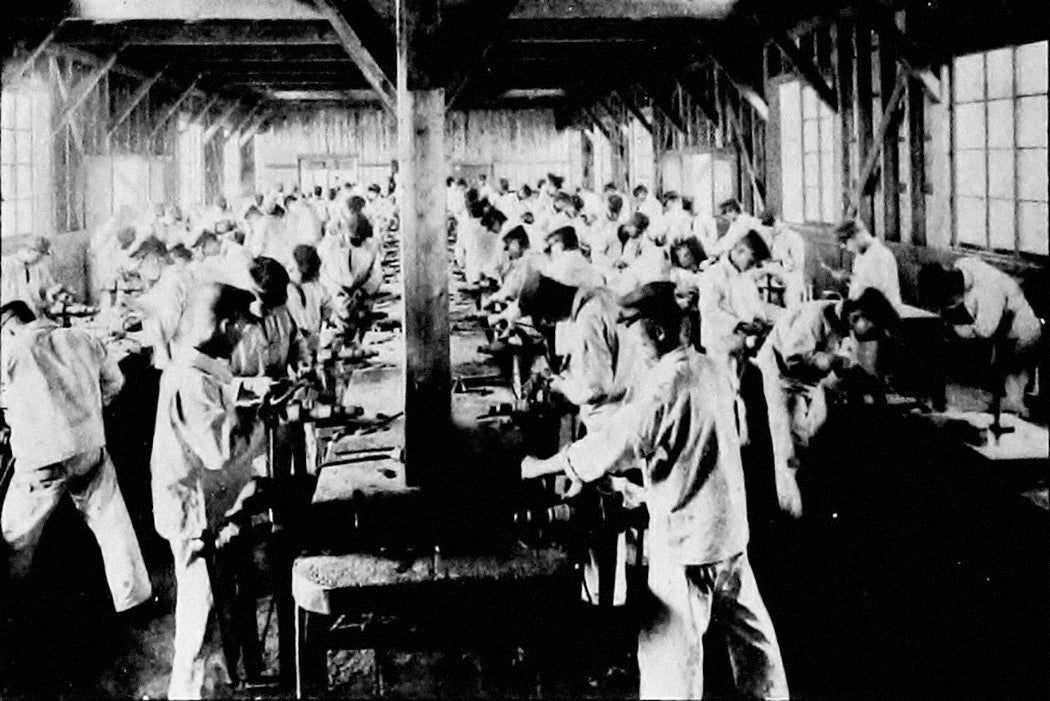All over the world, workers are being subjected to increased time-discipline. Companies capture office workers’ keystrokes, implement just-in-time staffing at coffee shops, and monitor every move of warehouse workers. This is just one more step in a trend that’s been going on for more than a century. Historian Takehiko Hashimoto describes an earlier shift, the adoption of scientific management in 1920s Japan.
Around the turn of the century, Hashimoto writes, Japanese factory workers—largely women—faced remarkably long working hours. A 1903 report by the Japanese Ministry of Agriculture and Commerce found that factory owners justified sixteen- and seventeen-hour workdays by arguing that Japanese workers were much less efficient than their European counterparts.
“Work discipline in our country is so low that workers do not distinguish between working and resting time,” it said. “It cannot be ignored that European workers are fully engaged in their work during working time. This is why we should not worry about a heavy burden being placed on Japanese workers even if we prolong working hours.”
The ministry noted that it was likely that the cause and effect actually ran the opposite way, with long working hours leading to loose discipline. In the decades that followed, Hashimoto writes, public and private leaders sought to change what they saw as a problem with the Japanese approach to time.
In the 1910s, writer Ikeda Toshiro introduced many in Japan to Frederick Taylor’s concept of scientific management. His best-selling book depicted a fictional character, Tarō, who rose from factory apprentice to efficiency expert. Tarō helped workers correct the “moral error” of getting ready to leave work twenty minutes before closing time, effectively stealing from their employer.
“For certain workers, being late is fundamentally a kind of sickness,” Toshiro wrote. “This disease can only be cured by intense treatment. If they are not cured by adequate treatment, they will develop a true habitual disease.”
Hashimoto writes that a key moment in the promotion of punctuality in Japan was the establishment of “Time Day” in 1920. The Tokyo Educational Museum and Japan’s Living Conditions Improvement League created the exhibition. Posters illustrated topics like “total time consumed for makeup throughout a woman’s life,” “a comparison of time spent in medical examinations in Japan and abroad,” “people unaware of time (idle chitchat and the like),” and “bothersome visits.”
Weekly Newsletter
This ideal of Western-style time discipline spread through the military, railroads, private factories, and offices in the 1920s and ’30s. Yet, Hashimoto writes, the ultimate objective remained in question. In the 1930s, one efficiency expert, Ueno Yoichi, penned essays attempting to reconcile management efficiency with Buddhist principles and ideals of human well-being. He argued that three hours of efficient work per person each day should be enough to produce everything the nation needed.
Today, of course, in Japan and all over the world, the continued promotion of efficiency is used to enact a very different vision.







